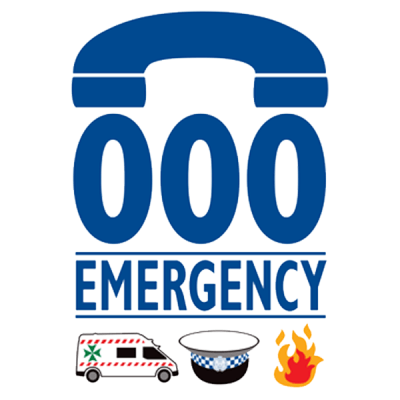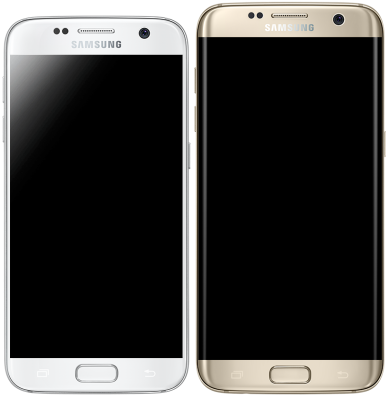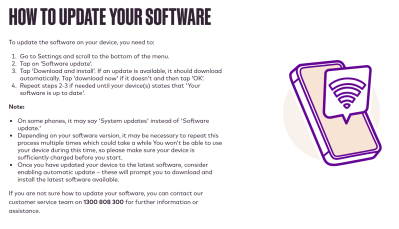We’re taught how to call emergency numbers from a young age; whether it be 911 in the US, 999 in the UK, or 000 in Australia. The concept is simple—if you need aid from police, fire, or ambulance, you pick up a phone and dial and help will be sent in short order.
It’s a service many of us have come to rely on; indeed, it’s function can swing the very balance between life or death. Sadly, in Australia, that has come to pass, with a person dying when their Samsung phone failed to reach the Triple Zero (000) emergency line. It has laid bare an obscure technical issue that potentially leaves thousands of lives at risk.
Peril

Australia’s Triple Zero emergency service becoming a hot-button issue. September 2025 saw widespread failures of emergency calls on the Optus network, an incident that was tied to at least three deaths of those unable to reach help. A series of further isolated cases have drawn more attention to edge case failures that have prevented people from reaching emergency services.
A bigger potential issue with the Triple Zero service has since bubbled up with the increased scrutiny on the system’s operation. Namely, the fact that a huge swathe of older Samsung smartphones cannot be trusted to successfully call 000 in an emergency. The potential issue has been on the radar of telcos and authorities since at least 2024. Since then, on November 13 2025, an individual in Sydney passed away after their phone failed to dial the emergency line. Their phone was using a Lebara SIM card, as managed by TPG and using the Vodafone network, when the incident occurred. Subsequent investigation determined that the problem was due to issues already identified with a wide range of Samsung phones.
The issue surrounds the matter of Australia’s shutdown of 3G phone service, which took place from 2023 to 2024. If you had a 3G phone, it would no longer be able to make any calls after the networks were shut down. Common sense would suggest that phones with 4G and 5G connectivity would be fine going forward. However, there was a caveat. There were a number of phones sold that offered 4G or 5G data connections, but could not actually make phone calls on these networks. This was due to manufacturers failing to implement Voice-over-LTE (VoLTE) functionality required to carry voice calls over 4G LTE networks. Alternatively, in some cases, the 4G or 5G handset could make VoLTE calls, but would fail to make emergency calls in certain situations.
Communication Breakdown
It all comes down to the way voice calls work on 4G and 5G. Unlike earlier 2G and 3G cellular networks, 4G and 5G networks are data only. Phone calls are handled through VoLTE, which uses voice-over-IP technology, or using Voice over NR (VoNR) in a purely 5G environment. Either way, the system is a data-based, packet-switched method of connecting a phone call, unlike the circuit-switched methods used for 2G and 3G calling.

The problem with this is that while 2G and 3G emergency calls worked whenever you had a tower nearby, VoLTE calling is more complex and less robust. VoLTE standards don’t guarantee that a given handset will be interoperable with all LTE networks, particularly when roaming. A given handset might only like IPv4, for example, which may be fine in its home region on its regular carrier. However, when roaming, or when doing an emergency call, that handset might find itself only in range of a different network’s towers, which only like IPv6, and thus VoLTE calling will fail. There are any number of other configuration mismatches that can occur between a handset and a network that can also cause VoLTE calling to fail.
Usually, when you’re in range of your phone’s home network with a modern 4G or 5G handset, you won’t have any problems. Your phone will use its VoLTE settings profile to connect and the emergency call will go through. After all, older models with no VoLTE support have by and large been banned from networks already. However, the situation gets more complex if your home network isn’t available. In those cases, it will look to “camp on” to another provider’s network for connectivity. In this case, if the phone’s VoLTE settings aren’t compatible with the rival network, the call may fail to connect, and you might find yourself unable to reach emergency services.
Specifically, in the Australian case, this appears to affect a range of older Samsung phones. Testing by telecommunications company Telstra found that some of these phones were unable to make Triple Zero emergency calls when only the Vodafone network was available. These phones will happily work when a Telstra or Optus network is available, but fallback to the Vodafone network has been found to fail. Research from other sources has also identified that certain phones can reach Triple Zero when using Telstra or Optus SIM cards, but may fail when equipped with a Vodafone SIM.
For its part, Samsung has provided a list of models affected by the issue. Some older phones, mostly from 2016 and 2017, will need to be replaced, as they will not be updated to reliably make emergency calls over 4G networks. Meanwhile, newer phones, like the Galaxy S20+ and Galaxy S21 Ultra 5G, will be given software updates to enable reliable emergency calling. Telecom operators have been contacting users of affected phones, indicating they will need to replace or upgrade as necessary. Devices that are deemed to be unable to safely make emergency calls will be banned from Australian mobile networks 28 days after initial notification to customers.
Broader Problem

This issue is not limited to just Australia. Indeed, European authorities have been aware of issues with VoLTE emergency calling since at least 2022. Many phones sold in European markets are only capable of making emergency calls on 2G and 3G networks, and could fail to reach emergency services if only 4G connections are available. This issue was particularly noted to be a risk when roaming internationally, where a handset sold in one country may prove inoperable with VoLTE calling on a foreign network.
Some blame has been laid on the loose standardization of the VoLTE standard. Unlike 2G and 3G standards, global interoperability is pretty much non-existent when it comes to phone calls. This wasn’t seen as a big issue early on, as when 4G devices first hit the market, 2G and 3G phone networks were readily available to carry any voice calls that couldn’t be handled by VoLTE. However, with 2G and 3G networks shutting down, the lack of VoLTE standardization and interoperability between carriers has been laid bare.
While Australia is currently tangling with this issue, expect it to crop up in other parts of the world before long. Europe is currently working towards 2G and 3G shutdowns, as our other jurisdictions, and issues around roaming functionality still loom large for those taking handsets overseas. Ultimately, end users will be asking a very simple question. If 2G and 3G technologies could handle emergency calls on virtually any compatible network around the world, how did it go so wrong when 4G and 5G rolled around? Old networks existed as a crutch that avoided the issue for a time, but they were never going to last forever. It surely didn’t have to be this way.
















Seems like a problem avoided by not kicking handsets off of the network. I understand when handsets are no longer radio compatible with the towers, nothing can be done about that, but a functional phone even without a subscription or the latest updated software shouldn’t be barred from connecting to emergency services, especially if it worked fine previously.
Of course, these companies only think about money first and only rarely do lives of consumers get any thought.
Don’t think they’re being actively barred, the simple version seems to be they’re failing to place a VoIP call because they don’t know how to talk to the network. That’s not really the network operator’s fault; sounds like Samsung failed to implement it correctly (potentially because a 3G switch off was not even in the horizon when those phones were made)
And the drive to turn off 3G is driven by the need to repurpose the spectrum.
What I’m not clear on is if or why this only affects emergency calls.
Wow nobody would have thought a non-standardized, proprietary communications protocol like volte would cause issues
/sarcasm
VoLTE is not proprietary. It’s a standard specified by the 3GPP.
You can (and people have) operated their own private RANs with VoLTE implementations.
It was a flakey proposed standard in the era these phones were made.
Was just VoIP at the time, being 3G phones.
I had shit luck with it, switched it off and got much better service.
It’s a service (…) it’s function can
It seems there is more than dialing emergency numbers on Samsung phones that is failing in AU…
I never understood why countries would choose an emergency number with all 3 digits the same. The increase of accidental butt dialing must have not been considered.
If your vision’s blurry or you’re about to black out, the likelihood of being able to hit the same key three times is probably higher than that of hitting two or three different keys. Better a small percentage of butt dialing than a failure to get through in an emergency.
Because these numbers were selected before “butt dialing” was a thing, youngling!
We used to have corded phones with rotary dials, and in the U.K. for example, 999 was selected as very easy to dial deliberately by touch without seeing the dial, but difficult to dial accidentally.
I actually had to do this once after a chilli-pepper-in-eyes incident – I can’t tell you how slowly each 9 seemed to take to dial!
Doesn’t matter which 3 digit number is used, there still a 1-in-792 chance it’ll get butt dialed. 3 constructive number would be easier to dial in an emergency and easier to butt dial.
0118 999 881 999 119 725 3
<3
How are you reading my TNETENNBA, get out of my head.
Hmm no one tested this? None of the OTA fixed this?
Really what good is the entire pipeline if such fundamental things get overlooked? CI/CD doesn’t have tests for stuff like this?
I’m guessing by the answer is – Who’s doing CI for an unsupported android version for a phone which was officially EoL years ago and isn’t getting security updates?
Aside from a few exceptions, Androids aren’t great at getting long term support.
This was not an issue when mobile phones used simple microcontrollers instead of Linux.
Maybe people pushing for Kernel implementation in Rust were right after all and Linus Torvalds is just a bitter old cockroach stuck on C, while acting as if he’s the Lukashenko of open source.
It has literally nothing to do with Linux. The problem is caused by rushed standardization and implementation of VoLTE, which is a fault of 3GPP partners and telcos.
Blaming a wrong person won’t help resolving the problem.
Turning off these networks has consequences. Here (Netherlands) they are planning on ending the 2G services in 2027 which will result in issues. Most elevators are on a 2G network for emergency use, which results in the elevators not being able to have emergency calls, which is a legal requirement. If that fails they aren’t allowed to have the elevator operational. I’ve already heard from a store owner that he is likely to board up his elevator as it’s too expensive to modernize it with all the regulations and certifications required. It’s too bad as it means that the store will be less accessible to people with disabilities.
And it’s not just elevators. Most alarm systems, tons of smart meters, farm equipment, climate control systems, etc, commonly use 2G systems and are designed to operate for decades and usually not operated by people who can easily afford to change things over (except maybe the smart meters). They also want to end AM/FM radio in favor of low quality on/off radio (DAB), which means that most emergency radio’s wont operate anymore.
It’s one of those “paradigm shifts” that the wall street crowd is so fond of.
Equipment based on plain analog telephone lines has worked reliably for about the last 100 years. The modern stuff based on whatever standards has a far FAR shorter life span. Infrastructure I put in seven years ago is already going end of life and will need full replacement.
This not a sustainable path for society.
Farm equipment with extension cords. What could possibly go wrong?
On the upside, we can now use our “telephones” to watch funny cat videos in HD
If newer emergency call handling is similar to GSM and 3G, the handset selects the strongest tower to send the emergency call to, even if it’s not your usual operator. So, if there is some incompatibility between your phone and that network (IPv4 vs IPv6 for example) the phone my work fine normally, but not be able to make an emergency call. Probably an edge case someone forgot to test.
Ah! Fantastic – that explains why it could be affecting emergency calls and not all calls.
VoLTE interoperability problem was (and is) pretty serious here in Korea. One of our telcos was switching from CDMA (3GPP2) to LTE, and wanted to have the VoLTE capability as quickly as possible. So, it rushed to implement VoLTE. Other telcos, not wanting to miss out, also followed.
Because of this, Korea was one of the first country to launch VoLTE. And poorly at that. Due to the rushed, quirky implementation, there were (and are) a lot of roaming-related issues (especially with imported cellular devices).
Interesting
That seems pretty crazy to me, if the device still works for the user often enough they haven’t felt the need to get a new one forcing them to buy a new one, and assuming they can just afford it… I don’t mind notifying the devices ‘hello, this device probably won’t work very well outside of these cities, so you should think about an upgrade as soon as you can’ seems fair, as its not forcing you off so quickly! Heck the 2 and 3G shutdowns around here were months and months of warning, and then didn’t actually happen that fast in many cases…
There is an international standard where on cell phones 112 is the universal alert number and that will also work.
Addendum from Wikipedia:
“In some countries, calls to 112 are not connected directly but forwarded by the GSM network to local emergency numbers (e.g., 911 in North America, 999 in the United Kingdom and Hong Kong, and 000 in Australia).